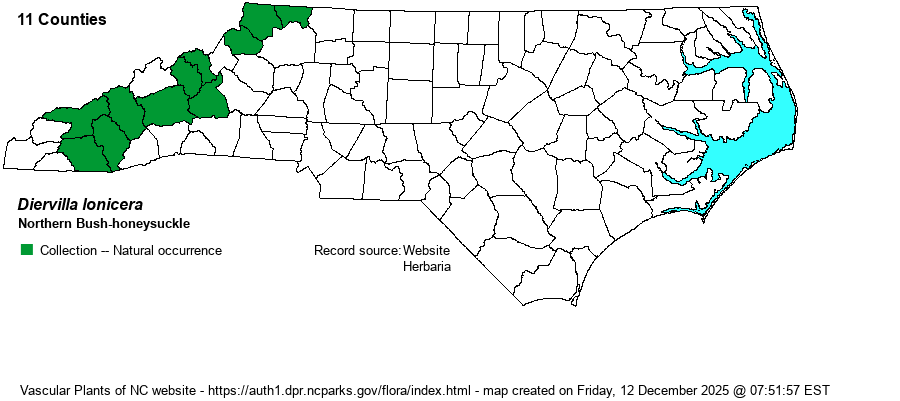| Author | P. Miller | |
| Distribution | Strictly in the Mountains, and at rather high elevations, usually over 4000 feet.
This is a widespread species to our north, being found across eastern Canada and then south to PA and IA. Southward, it is essentially limited to the Appalachians, barely reaching northern GA.
| |
| Abundance | Rather rare to uncommon, in a fairly limited habitat. Despite it being given an S2 state rank by NC NHP, it is not listed (as yet) as a Watch List or Significantly Rare species -- perhaps as many populations are on protected lands at high elevations and the habitats are not under much threat. | |
| Habitat | This species is limited to high elevation rocky forests and openings, bluffs, and outcrops, as well as dry forests on thin soil (where not necessarily rocky). |
| Phenology | Blooms in June and July, and fruits from August to October. | |
| Identification | This and the two other members of the genus are somewhat low-growing deciduous shrubs, with long and widely spreading stems, and thus are wider than tall. It grows only to 2-3 feet tall. It has opposite leaves that have serrated margins and are lanceolate with long, tapering tips, reaching about 4 inches long. All of these three species have light to medium yellow flowers that grow in clusters in the leaf axils near branch tips or at the ends of branches. What distinguishes this Diervilla from the other two is that the leaves have short petioles to about 1/4-inch, as opposed to being sessile. | |
| Taxonomic Comments | Generally none
Weakley (2020) splits out the family Diervillaceae from Caprifoliaceae, but provides no taxonomic basis for this move. We will await further developments. | |
| Other Common Name(s) | Low Bush-honeysuckle, Dwarf Bush-honeysuckle | |
| State Rank | S2 | |
| Global Rank | G5 | |
| State Status | | |
| US Status | | |
| USACE-agcp | | |
| USACE-emp | | |

